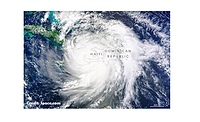A big component of scaling your business up to respond to a disaster situation includes having the equipment to do the work. It’s pretty unlikely you currently have the number of air movers, dehus, and other tools on hand to cover you during CAT work. That likely means turning to a rental company you trust to help you get the work done.
But when the disaster happens, how do you know what you need? Who do you contact? And how does all the coordination work?
Some experts on rental equipment and supplies have the answers!
Meet the Experts
David Drinard – Strategic Accounts Manager at Sunbelt Rentals, Inc.
Patrick Choma – Segment Support Manager at Herc Rentals
1) What are the most rented pieces of equipment during a CAT loss event?
PC — When a major disaster strikes, the most important thing for any individual or business is to ensure public safety and access to recovery services. Portable power equipment plays a key role in literally, and figuratively, keeping the lights on during a CAT loss event and is the most popular equipment at the outset of recovery. Once the damage has been assessed, the most popular products mitigate water damage like dessicant dehumidifiers, LGR dehumidifiers and carpet fans.
DD — Generators, power distribution, dehumidifiers, fans, and air scrubbers are the main needs at the beginning of a disaster. Skidsteers, backhoes, excavators, power washers, floor strippers, and many other general tool items are required as well, mainly a few days after the event.
2) What do restoration contractors need to know about renting equipment during times where equipment might be in short supply?
DD — They need to know how important it is to have an account set up so that they can call and get their equipment ordered quickly. Equipment often is in short supply at the beginning of a disaster but usually the availability starts to improve as jobs get wrapped up.
PC — The most important thing for restoration contractors to keep in mind is that CAT loss-related equipment is going to rent or sell out pretty fast, but it can be used on many jobs during the entire disaster recovery period. Restoration contractors who rent the most equipment early can usually find the best availability, and will then have the opportunity to use the equipment on many jobs—potentially using the same piece of equipment for several weeks, or months, continuously as they contract new work.
3) Is there any benefit to contractors having a relationship with a rental company before a major loss occurs? What values should contractors look for in a reputable rental company?
PC — There is a huge benefit to having a relationship with a rental company before a major loss. First and foremost, partnering with the right equipment rental company will ensure that the restoration contractors’ customers will get the equipment and service they need precisely when they need it. Getting lives and businesses back to normal for the customer is only possible if the restoration contractor is prepared, which includes having a reliable and trustworthy equipment rental company as a partner. The right equipment rental company is one who has the industry’s best, highest performing and innovative products, along with a commitment to acting as a true partner, not just a supplier.
DD — Yes, as mentioned it is important that restoration contractors have a relationship with their vendor as most are first come first served for equipment. Having a relationship also would provide the communication prior to a hurricane so that pre-ordering equipment can be discussed and contractors can exercise their judgement as to whether to lock down the equipment early or not. It also is valuable to understand how the rental company operates with regard to logistics and terms and conditions so everyone has an understanding of how the equipment will be billed.
4) What are some details you’ve seen contractors overlook in these often stressful disaster response situations?
DD — The cost to mobilize. It is important for contractors to know the cost of delivering large generators and dehumidifiers can be very high. No company has all of their assets located in one place waiting on a disaster... so mobilization costs are incurred and thus passed on to the contractors who then should pass the cost on to their customer.
PC — We have seen instances where contractors don’t have enough power distribution to power their equipment on the job. For example, a customer can roll in 50 LGR’s and 150 air movers on a jobsite, but wind up not having enough power to use all that equipment. We can quickly design a power distribution system, typically over the phone, to provide enough power for any scenario. We ask a few questions and then work with the customer to get that equipment working. Plus, fueling is always a challenge during a CAT situation and is often overlooked. We can provide fueling for our equipment during these stressful times.
5) What do the logistics look like of a large equipment rental order? Will it get delivered? How should contractors manage the equipment? How is it returned?
PC — Logistics play a huge role in getting equipment onsite in a timely manner. Being prepared and moving equipment in at the right times is key. We have plans in place to move equipment at a moment’s notice and use both internal resources and external delivery services during a CAT scenario. We not only deliver to the site but offload and set large pieces of equipment in place, like desiccant units and 1 MW generators. At that point, we work with the project manager or point of contact to set the project up and provide a turnkey solution. With the new Herc Rentals app you can manage your equipment right from a smart phone, tablet or computer. At the end of the rental just call us and we will come pick everything up.
DD — Equipment can be delivered in a disaster as long as the highways are open and safe. In some disasters, there will be times where roads are impassible or the government is not allowing anyone into an unsafe area... depending on what the order is. Contractors will receive their equipment either by the renting location or by third party haulers depending on what is needed and where it is being delivered. Contractors should record the asset numbers and serial numbers on the equipment to help keep detailed records of what was used. Documentation is extremely important both for their billing purposes and to ensure accuracy when returning the equipment. Contractors can return equipment on their own vehicles or we can pick it up when the job is completed.







Report Abusive Comment